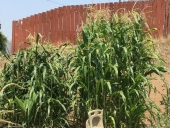
















 2
2





 .
.




 It must be a southern thing!
It must be a southern thing!







 2
2




 2
2




















 2
2




John Meshna (owner)
Blue River LLC
1195 Dog Team Road
New Haven, Vt 05472
 2
2




Principal - Terra Phoenix Design
http://TerraPhoenixDesign.com




 2
2




 Oh my. This has been most fun! I just read each of your links and enjoyed them all very much! You're hilarious! Rock on!
Oh my. This has been most fun! I just read each of your links and enjoyed them all very much! You're hilarious! Rock on!
 2
2











 1
1




John Meshna (owner)
Blue River LLC
1195 Dog Team Road
New Haven, Vt 05472








John Meshna (owner)
Blue River LLC
1195 Dog Team Road
New Haven, Vt 05472
 2
2




 2
2









 2
2




 2
2




 2
2




Brenda
Bloom where you are planted.
http://restfultrailsfoodforestgarden.blogspot.com/








 )how did someone cause the tentworm invasion?
)how did someone cause the tentworm invasion?[img]http://i109.photobucket.com/albums/n52/havlik1/permie%20pics2/permiepotrait3pdd.jpg[/img]
"One cannot help an involuntary process. The point is not to disturb it. - Dr. Michel Odent
 3
3




 3
3




 2
2




 1
1




 2
2




paul wheaton wrote:
I agree, rose.
When there is an insect problem, our knee jerk reaction is to instantly wipe out the problem. But this usually comes at a high price.
The existence of problem insects is a sign that we are doing something wrong. Something big. Something long term.
[img]http://i109.photobucket.com/albums/n52/havlik1/permie%20pics2/permiepotrait3pdd.jpg[/img]
"One cannot help an involuntary process. The point is not to disturb it. - Dr. Michel Odent
 1
1




 3
3








"the qualities of these bacteria, like the heat of the sun, electricity, or the qualities of metals, are part of the storehouse of knowledge of all men. They are manifestations of the laws of nature, free to all men and reserved exclusively to none." SCOTUS, Funk Bros. Seed Co. v. Kale Inoculant Co.
 2
2





|
Wow! It's so clean! Did you do this tiny ad?
Support permies and give beautiful gifts to gardeners: permaculture playing cards.
https://gardener-gift.com/
|









